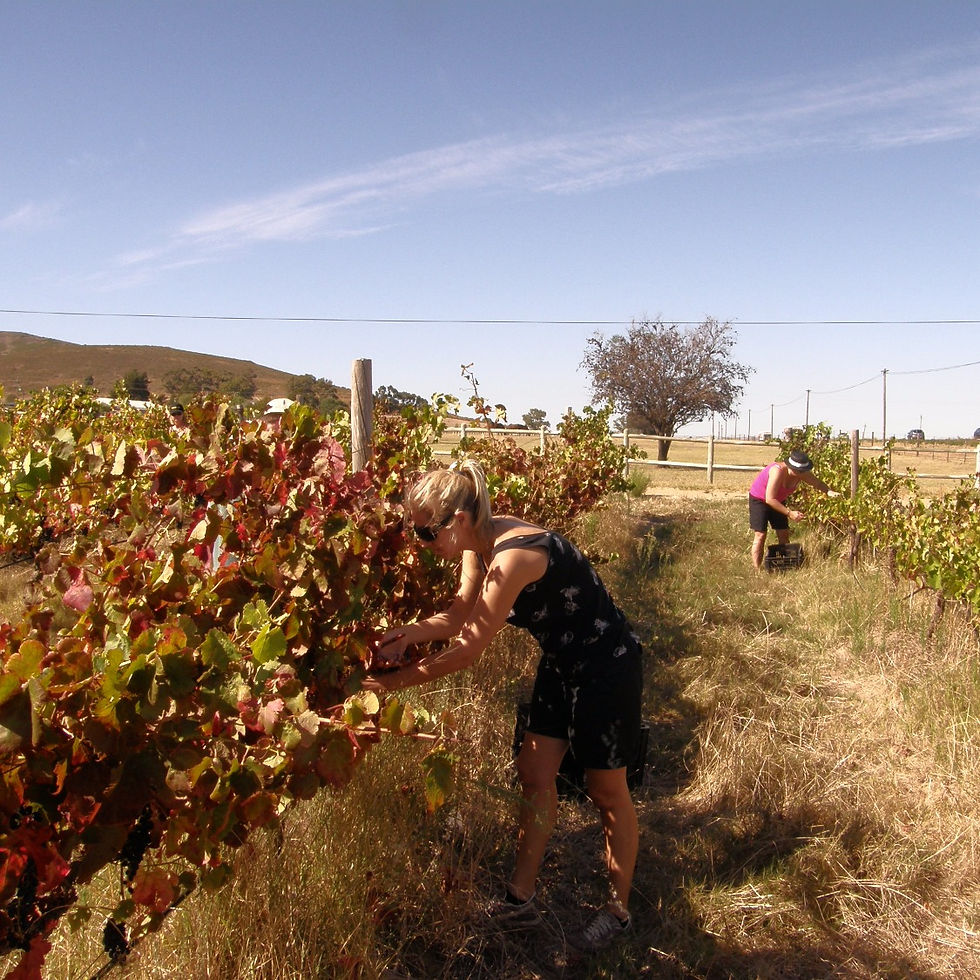South Africa's wine growing appellations: Wine of Origin
- Kim Rabe

- Apr 3, 2016
- 3 min read
One of the first things wine tourists want to grasp is South Africa’s different wine growing appellations. Most foreign visitors have an understanding of the Appellation d’origine controlee (AOC) system, used in France and adopted by most of the European Union to classify wines of origin. The system varies from country to country but essentially legally defines areas where certain grapes may grow, what vinification practices may be used and what may be labelled on the bottle. We have become familiar with names like Champagne, Burgundy, Chianti, Rioja, Porto and Tokaj that name some of the most exclusive appellations of Europe.
The protection of these names extends beyond just wine and includes foods for example cheeses and hams and other spirits. In South Africa like elsewhere in the world we have had to rename wines and spirits according to these laws. A sparkling wine made in the method champenoise of Champagne is in South Africa named a Method Cap Classique and a Port must now be labeled a Cape Ruby, Cape Vintage or Cape Tawny according to its style.

The concept of terroir also comes into play when talking about wines of origin: this is the view that various aspects of nature have an impact on the quality and style of a wine and takes into consideration things like soil type, altitude, orientation toward the sun and the various microclimates of a vineyard. In South Africa, this concept is widely talked about and, although there is no legislation controlling what cultivars or vineyard practices must be used, research into what cultivars are best suited to certain areas is ongoing.
The majority of South Africa’s wine growing area falls within the Western Cape along the coastal zone. Vineyards benefit from regular fog and cooling sea breezes off the cold Atlantic which moderate the Mediterranean climate. Summers are typically warm with rains falling during the cool winter months. The notorious south-easterly winds, named the Cape Doctor, hinder the development of vineyard diseases during the spring and summer months. The Cape’s vineyards benefit from ancient geology and diverse topography. This varied terrain from valley floors to mountain slopes and peaks offers many different micro climates and soils in which to grow various cultivars.

The wine of Origin system was established in 1973, in order to classify certain areas of similar terroir into groupings and provide accurate information on the wine bottle relating to the origin, cultivar and vintage in compliance with EU regulations. Wines of origin wines must be made 100% from grapes from a designated area, which can be classified as one of the following:
A “single vineyard” wine must be produced from a defined area less than 6 hectares in size.
An “Estate wine” can come from adjacent farms so long as they are farmed together and produced at an onsite cellar.
A ward eg: Franschhoek and Constantia is a defined area with similar soil types and climate that can produce wines of a distinctive character and is most similar to a European appellation.
A district eg: Paarl or Stellenbosch usually encompasses a combination or section of wards which have similar macro-geographical characteristics (rivers and mountains).
A region eg; Klein Karoo or Coastal region usually encompass several districts or parts of districts and enable producers to blend wines from different districts, but market them under one name of origin. .
A geographical unit eg: the Western Cape, Northern Cape or Kwa Zulu Natal.

The Wine and Spirit Board will certify a wine which meets all requirements with regard to the origin (e.g. Stellenbosch), cultivar (e.g. Pinotage) and vintage (eg 2014) and has passed a quality evaluation by one of their tasting panels. Strict control is administered for certification at various stages of the production from the pressing of grapes, blending, and bottling, preliminary and final approvals. This is all recorded through an identification number on each certification seal. In addition to the Wine of Origin seal, South Africa was the first country to establish the Integrated Production of Wine (IPW) seal in 1998. This seal not only confirms the wine of origin authenticity but also confirms the wine to be from a sustainable and environmentally friendly producer.
The conversation on terroir is so complex and contentious that many local producers debate the classification of areas under the wine of origin system according to the natural characteristics of the different wards, districts, and regions. As certain areas become known for producing specific cultivars of high quality and as consumers become more aware of what they are drinking, these systems may be modified and improved upon. What we can be proud of is a system that allows the consumer to trace their bottle of wine back to the vineyard and makes producers accountable for their product.
For a more in depth look at the Wine of Origin systems follow these links:


Comments